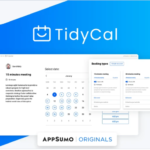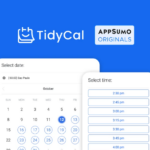(781) 470-4001

As a small business owner, creating a solid marketing plan is the key to success. Not only does it help you define your target audience and goals, but it also ensures that you’re making the most of your budget and timeline. Here’s a step-by-step guide to creating a marketing plan that works for you.
Identify Your Target Market
The first step in creating a successful marketing plan is to identify your target market. Who are you trying to reach? What demographic do they fall into? What are their needs and desires? These questions are crucial to understanding your target market and developing effective marketing strategies.
One way to identify your target market is to conduct market research. This can involve surveys, focus groups, or analyzing data from previous sales. By gathering information about your customers, you can create buyer personas that represent your target market.
For example, if you are selling a new line of athletic shoes, your target market may be active individuals aged 18-35 who are interested in fitness and fashion. By understanding their needs and desires, you can tailor your marketing messages to resonate with them.
Another important factor to consider is your competition. Who else is targeting your audience? How can you differentiate your brand and products from theirs? This requires a deep understanding of your industry and market trends.
Once you have a clear understanding of your target market and competition, you can start to develop strategies to reach them effectively. This may include social media advertising, influencer partnerships, email marketing campaigns, and more.
Overall, identifying your target market is the foundation of any successful marketing plan. By understanding who you are trying to reach, you can create targeted and effective campaigns that drive sales and grow your business.
Set SMART Goals and Objectives
Setting goals and objectives is an essential part of any successful marketing strategy. SMART goals and objectives are a valuable framework to help you set goals that are Specific, Measurable, Achievable, Relevant, and Time-bound. By setting SMART goals, you can ensure that your marketing efforts are focused, targeted, and effective.
When setting marketing goals, it’s important to make them as specific as possible. For example, instead of setting a goal to “increase sales,” set a goal to “increase sales by 10% in the next quarter.” This will give you a clear target to work towards and will help you measure your progress.
Measurability is another key aspect of SMART goals. By setting goals that are measurable, you can track your progress and adjust your strategy as needed. This will help you stay on track and ensure that you are making progress towards your overall business objectives.
Achievability is also important when setting marketing goals. While it’s important to set ambitious goals, it’s equally important to ensure that they are achievable. Setting goals that are too difficult or unrealistic can be demotivating and may lead to frustration and burnout.
Relevance is another key consideration when setting marketing goals. Your goals should align with your overall business objectives and should be relevant to your target audience. By setting goals that are relevant, you can ensure that your marketing efforts are focused on the right areas and are more likely to be successful.
Finally, time-bound goals are essential for ensuring that your marketing efforts are focused and effective. By setting deadlines for your goals, you can ensure that you are making progress towards your objectives and can adjust your strategy as needed.
In summary, setting SMART goals and objectives is an essential part of any successful marketing strategy. By setting specific, measurable, achievable, relevant, and time-bound goals, you can ensure that your marketing efforts are focused, targeted, and effective. So take the time to set SMART goals for your marketing strategy, and watch your business grow and thrive!
Set Your Budget and Timeline
After setting your goals, it’s time to set your budget and timeline. Consider how much you’re willing to spend on marketing, and when you want to see results. Be realistic about what you can achieve within your timeline, and ensure you allocate enough resources to achieve your goals.
When setting your budget, it’s important to take into account all the different marketing channels you plan to use. For example, if you plan to run social media ads, you’ll need to factor in the cost of the ad spend, as well as any fees you may need to pay to a social media advertising agency. Similarly, if you plan to run a content marketing campaign, you’ll need to factor in the cost of creating high-quality content, as well as any fees you may need to pay to a content marketing agency.
It’s also important to consider your timeline. Depending on your goals, you may need to allocate more resources to your marketing efforts in the short term, before scaling back in the long term. For example, if you’re launching a new product, you may need to invest heavily in marketing in the first few months to build awareness and generate sales. Once your product has gained traction, you may be able to scale back your marketing efforts and focus on other areas of your business.
Another factor to consider when setting your budget and timeline is your competition. If you’re in a highly competitive industry, you may need to invest more heavily in marketing to stand out from the crowd. On the other hand, if you’re in a niche industry with little competition, you may be able to achieve your goals with a smaller budget and shorter timeline.
Ultimately, setting your budget and timeline is about finding the right balance between your goals, resources, and competition. By taking the time to carefully consider these factors, you can ensure that your marketing efforts are effective and efficient, and that you achieve the results you’re looking for.
Adapt Your Plan as Needed
Marketing plans are an essential component of any successful business. They outline the strategies and tactics that will be used to promote a product or service and reach the target audience. However, creating a marketing plan is just the beginning. The real challenge is implementing the plan and making it work.
As you begin to implement your marketing plan, you may find that some strategies are more effective than others. For example, you may discover that your social media campaigns are generating more leads than your email marketing campaigns. Or, you may find that your target audience is responding better to video content than written content.
It’s essential to be willing to adapt your plan as needed to ensure you’re making the most of your resources and reaching your target audience effectively. This means being open to making changes to your strategies and tactics as you gather data and insights about what’s working and what’s not.
One way to stay on top of your marketing plan is to regularly review and analyze your results. This means tracking metrics such as website traffic, social media engagement, and lead generation. By keeping a close eye on these metrics, you can quickly identify areas where your plan may need to be adjusted.
Another important factor to consider when adapting your plan is your competition. Keep an eye on what your competitors are doing and adjust your strategies accordingly. For example, if you notice that a competitor is gaining traction with a particular marketing tactic, you may want to consider incorporating that tactic into your own plan.
Ultimately, the key to a successful marketing plan is flexibility. Be willing to make changes and adjustments as needed, and you’ll be well on your way to reaching your marketing goals.
Here are a few tips from Blackbird Digital Marketing:
Use Search Engine Profiles to Get Found Fast
Search engines like Google and Bing are essential tools for small businesses looking to increase their online presence. In today’s digital age, having a strong online presence is crucial to the success of any business. By creating a Google Business profile or Bing Places listing, you can ensure your business is easily found by potential customers searching for products or services like yours.
Creating a search engine profile is a simple process that can have a significant impact on your business. By providing accurate and up-to-date information about your business, you can help potential customers find you quickly and easily. Make sure your profile is complete and includes all relevant information, such as your contact information, hours of operation, and any relevant photos or videos.
One of the benefits of creating a search engine profile is that it can help improve your search engine rankings. When you create a profile, you are essentially telling search engines like Google and Bing that your business exists and providing them with valuable information about your business. This information can help search engines better understand what your business does and where it is located, which can help improve your search engine rankings.
Another benefit of creating a search engine profile is that it can help you stand out from your competition. By providing potential customers with detailed information about your business, you can help differentiate yourself from other businesses in your industry. This can be especially important if you operate in a crowded market where there are many businesses offering similar products or services.
Overall, creating a search engine profile is an essential step for any small business looking to increase its online visibility. By providing accurate and up-to-date information about your business, you can help potential customers find you quickly and easily and improve your search engine rankings. So what are you waiting for? Create your search engine profile today and start getting found fast!
Develop Content That Informs Customers
Creating valuable content is a fundamental part of any successful marketing plan. Develop content that informs your customers about your products or services, and provides value to them. This could include blog posts, infographics, videos, or social media posts.
Optimize Your Website for Local SEO
Optimizing your website for local SEO is a key part of any small business marketing plan. Make sure your website is mobile-friendly, and includes relevant keywords and phrases that your target audience is searching for. This will help improve your search engine rankings and make it easier for potential customers to find you online.
Build Links to Your Website
Building links to your website is another important element of small business marketing. This can include guest posting on relevant blogs, networking with other businesses in your industry, or participating in online forums. The more links you have pointing to your website, the higher it will rank in search engine results.
Use Social Media to Generate Awareness
Social media is a powerful tool for small businesses looking to generate awareness and connect with their target audience. Choose the social media platforms that are most relevant to your business, and develop a consistent presence on them. Share valuable content, engage with your followers, and use paid advertising to target your ideal audience.
In conclusion, creating a successful marketing plan requires time, effort, and a clear understanding of your target audience and business objectives. By following these steps and adapting your plan as needed, you can develop a marketing strategy that drives traffic, generates leads, and grows your business.
Blackbird Digital Marketing Offers Productized Services
What does that mean?
It means that we break up all of your needs into different building blocks, allowing you to build your marketing plan around the results that we deliver. To learn more about the different building blocks, click here.




